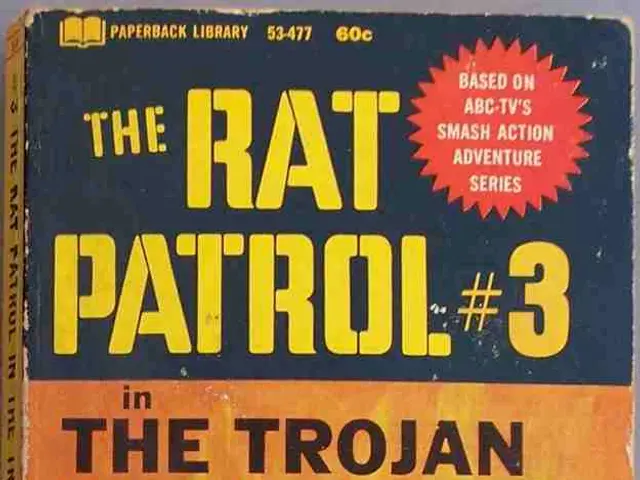Discover top-notch independent game creators for a creative boost
In the world of indie game development, creativity and innovation are the driving forces. Here are some of the most influential indie game developers and their unique approaches to game development:
Influential Indie Game Developers
- Jon Hare
- Background: Co-founder of Sensible Software, known for Sensible Soccer and Cannon Fodder.
- Approach: Jon Hare is recognised for his accessible, player-focused design. His continued support for independent creators has inspired many in the indie community.
- Playdead (Limbo)
- Background: Known for creating critically acclaimed games like Limbo.
- Approach: Limbo used a haunting, monochromatic art style combined with atmospheric sound design and clever puzzle mechanics, creating a unique gaming experience.
- Team Meat (Super Meat Boy)
- Background: Developers of the challenging platformer Super Meat Boy.
- Approach: They emphasised precise controls, difficult platforming sections, and a charming art style, making the game a favourite among gamers.
- Moonhood
- Background: Known for creating games with unique art styles, such as The Midnight Walk.
- Approach: Moonhood uses personal passions to inspire game art, creating distinctive experiences like the stop-motion horror game The Midnight Walk.
- ConcernedApe (Eric Barone), Stardew Valley
- Background: Creator of the highly successful farming simulation game Stardew Valley.
- Approach: Barone worked solo, focusing on creating a deep, engaging storyline and gameplay mechanics similar to classic games.
Key Unique Approaches
- Innovative Art Styles: Many indie developers, like Moonhood, focus on creating unique and visually striking art styles that set their games apart.
- Community Engagement: Developers like Eric Barone of Stardew Valley emphasise community feedback and engagement, often incorporating player suggestions into game development.
- Challenging Gameplay Mechanics: Games like Super Meat Boy and Limbo have become famous for their challenging yet rewarding gameplay, pushing the boundaries of player engagement.
- Personal Passion and Inspiration: Many indie developers draw inspiration from personal interests or hobbies, integrating these into their game designs to create distinctive experiences.
Notable Developments
- Digital Sun's Moonlighter and Moonlighter 2 provide examples of how indie game developers can create engaging gameplay by putting a twist on familiar gaming tropes. The character of the most familiar video game NPCs is one of the most common, and Moonlighter plays on this by having us take the role of a shopkeeper.
- MetaHuman Animator from Epic Games captured actors' performances and applied them as animation data to the facial rig, speeding up the workflow by around 20 times.
- Bionic Bay from Mureena and Psychoflow Studio used a broader color palette to create a sci-fi world with a painterly, almost cinematic quality.
- Matt Newell set out to create the feel of different cameras in Lushfoil Photography Sim.
- Rematch, developed by Slocap, has an optimistic vision of the future and big themes of social justice, diversity, fair play, and advanced technology.
- Slow Bros' game Harold Halibut uses handmade poseable clay puppets and detailed sets, scanned and digitized into Unity.
- Robert Koch, co-founder of Tiny Roar, stated that the studio aims to differentiate itself by breaking with stereotypes.
- Matt Newell, developer of Lushfoil Photography Sim, started exploring Unreal Engine 4 as a way to create virtual environments as a hobby, eventually adding mechanics to create the game.
- Yellow Brick Games' action RPG Eternal Strands uses a stylized aesthetic that benefits its physics-based gameplay.
Special Mentions
- Art director Sabrina Tobal from Slocap discussed the importance of key words highlighted by director Pierre Tarno at the beginning of conception, which included "futuristic", "feel-good", "optimistic", as well as "movement" and "cooperation".
- VOID Interactive's tactical shooter Ready or Not was made with Unreal Engine, demonstrating that indie games aren't restricted to 2D.
- Tiny Roar, an indie game developer, has a name that alludes to a small creature and punches above its weight.
- Powerhoof's game The Drifter was influenced more by thriller novels and films than by other games.
- Lou's Lagoon, developed by Tiny Roar, feels like a lost GameCube classic, channeling some Nintendo magic in its mix of influences.
- DenkiWorks' game Tanuki: Pon's Summer's anime-like Japanese countryside setting was inspired by the team's own experience of Japan.
- In Tiny Roar's games, species and elements from typical locations are often combined to create something more fresh.
- While developing Afterlove EP, the team used various tools, including Procreate for digital painting on iPad.
- Pikselnesia's game Afterlove EP is set in Jakarta and sees the player as a musician grieving for his late girlfriend as he tries to prepare for an important gig.
- TomorrowHead Studio's game Will: Follow The Light feels like the work of a much bigger team than it was, thanks to the power of Unreal Engine 5.
- Q-Games and Baiyon's game Dreams of Another features dreamlike point cloud visuals and a protagonist with an assault rifle that brings objects into being.
- The team behind Will: Follow The Light spent months researching to create the right atmosphere, including speaking to a professional sea captain and learning how to sail, to get the stormy sea right.
- The global indie game market is projected to reach $4.85bn in 2025 and $9.55bn by 2030, with mobile games accounting for half of all revenue.
- Slocap's game Rematch reimagines football as painterly, impressionistic 'cartoon chaos' that feels more like playing a real team sport.
- The team behind Afterlove EP had to find the motivation to carry on after the game's original writer and director Fahmi Hasni passed away suddenly in 2022.
- Pattatie Games' music store narrative game Wax Heads was created using Godot and features a brash post-punk comic book style.
- Unreal Engine 5's Chaos physics and destruction system were vital for Eternal Strands, requiring a transition from PhysX used in Unreal Engine 4.
- Moonhood's game The Midnight Walk contains more than 700 handmade clay models that were scanned before being assembled in Unreal Engine 5.
- Roman Novikov, founder and creative director of TomorrowHead Studio, attributed the game's polish to Unreal Engine 5, despite the team having only 16 members.
- Many of Lushfoil Photography Sim's locations are places Matt has visited and taken reference photos of.
- River End Games' use of Epic Games' MetaHuman technology enabled them to elevate a game's storytelling and deliver Triple-A quality performances, quickly creating believable characters with a very wide range of facial expressions.
- Newell used the free Megascans library of photo-scanned assets from Epic Games to help create the environments in Lushfoil Photography Sim.
- Lushfoil Photography Sim includes objectives that unlock new features, but Newell was determined to keep these optional, making this also a game you can explore merely for exploration's sake.
- Feral Cat Den's detective game Genesis Noir was notable for its visually striking minimalist graphic design look.
- The team behind Afterlove EP spent a lot of time perfecting the art style, with background artist Pinga noting that it took several months and trial and error to make Rama's room feel like it belonged to Rama.
- Ole Tillmann, art director and studio co-founder of Slow Bros, mentioned that some of the most time-consuming work on the game involved learning how to run a game company, finding money, and inventing a physical-thing-to-interactive-virtual-thing-pipeline.
- Jon Hare, co-founder of Sensible Software, is known for his accessible and player-focused design in games like Sensible Soccer and Cannon Fodder.
- Playdead, creators of Limbo, used a haunting, monochromatic art style combined with atmospheric sound design and clever puzzle mechanics to create a unique gaming experience.
- Team Meat, developers of Super Meat Boy, emphasized precise controls, difficult platforming sections, and a charming art style to make the game a favorite among gamers.
- Moonhood focuses on creating unique and visually striking art styles, like the stop-motion horror game The Midnight Walk, inspired by personal passions.
- Eric Barone, creator of the highly successful farming simulation game Stardew Valley, worked solo and prioritized creating a deep, engaging storyline and gameplay mechanics similar to classic games.
- Indie game developers like Digital Sun with Moonlighter and Moonlighter 2 create engaging gameplay by putting a twist on familiar gaming tropes.
- MetaHuman Animator from Epic Games can capture actors' performances and apply them as animation data to the facial rig, speeding up the workflow by around 20 times.
- Bionic Bay from Mureena and Psychoflow Studio used a broader color palette to create a sci-fi world with a painterly, almost cinematic quality.
- Matt Newell set out to create the feel of different cameras in Lushfoil Photography Sim.
- Rematch, developed by Slocap, has an optimistic vision of the future and big themes like social justice, diversity, fair play, and advanced technology.
- Slow Bros' game Harold Halibut uses handmade poseable clay puppets and detailed sets, scanned and digitized into Unity.
- Robert Koch, co-founder of Tiny Roar, stated that the studio aims to differentiate itself by breaking with stereotypes.
- Matt Newell started exploring Unreal Engine 4 as a hobby, eventually adding mechanics to create the game Lushfoil Photography Sim.
- Yellow Brick Games' action RPG Eternal Strands uses a stylized aesthetic that benefits its physics-based gameplay.
- Art director Sabrina Tobal from Slocap emphasized the importance of key words like "futuristic", "feel-good", "optimistic", and "movement" for the conception of the game Rematch.
- VOID Interactive's tactical shooter Ready or Not was made with Unreal Engine, showing that indie games aren't restricted to 2D.
- Tiny Roar, an indie game developer, is named to allude to a small creature, yet punches above its weight.
- Powerhoof's game The Drifter was influenced more by thriller novels and films than by other games.
- Lou's Lagoon, developed by Tiny Roar, feels like a lost GameCube classic, channeling some Nintendo magic in its mix of influences.
- DenkiWorks' game Tanuki: Pon's Summer has an anime-like Japanese countryside setting, inspired by the team's own experiences in Japan.
- Tiny Roar's games often combine species and elements from typical locations to create something more fresh.
- While developing Afterlove EP, the team used various tools, including Procreate for digital painting on iPad.
- Pikselnesia's game Afterlove EP is set in Jakarta and sees the player as a musician grieving for his late girlfriend as he tries to prepare for an important gig.
- TomorrowHead Studio's game Will: Follow The Light feels like the work of a much bigger team than it was, thanks to the power of Unreal Engine 5.
- Q-Games and Baiyon's game Dreams of Another features dreamlike point cloud visuals and a protagonist with an assault rifle that brings objects into being.
- The team behind Will: Follow The Light spent months researching to create the right atmosphere, including speaking to a professional sea captain and learning how to sail, to get the stormy sea right.
- The global indie game market is projected to reach $4.85bn in 2025 and $9.55bn by 2030, with mobile games accounting for half of all revenue.
- Slocap's game Rematch reimagines football as painterly, impressionistic 'cartoon chaos' that feels more like playing a real team sport.
- After the sudden passing of the original writer and director Fahmi Hasni in 2022, the team behind Afterlove EP had to find the motivation to carry on.
- Pattatie Games' music store narrative game Wax Heads was created using Godot and features a brash post-punk comic book style.
- Unreal Engine 5's Chaos physics and destruction system were vital for Eternal Strands, requiring a transition from PhysX used in Unreal Engine 4.
- Moonhood's game The Midnight Walk contains more than 700 handmade clay models that were scanned before being assembled in Unreal Engine 5.
- Roman Novikov, founder and creative director of TomorrowHead Studio, attributed the game's polish to Unreal Engine 5, despite the team having only 16 members.
- Many locations in Lushfoil Photography Sim are places Matt Newell has visited and taken reference photos of.
- River End Games' use of Epic Games' MetaHuman technology enabled them to elevate a game's storytelling and deliver Triple-A quality performances, quickly creating believable characters with a very wide range of facial expressions.
- Newell used the free Megascans library of photo-scanned assets from Epic Games to help create the environments in Lushfoil Photography Sim.
- Lushfoil Photography Sim includes objectives that unlock new features, but Newell was determined to keep these optional, making this also a game you can explore merely for exploration's sake.
- Feral Cat Den's detective game Genesis Noir was notable for its visually striking minimalist graphic design look.
- The team behind Afterlove EP spent a lot of time perfecting the art style, with background artist Pinga noting that it took several months and trial and error to make Rama's room feel like it belonged to Rama.
- Ole Tillmann, art director and studio co-founder of Slow Bros, mentioned that some of the most time-consuming work on the game involved learning how to run a game company, finding money, and inventing a physical-thing-to-interactive-virtual-thing-pipeline.




